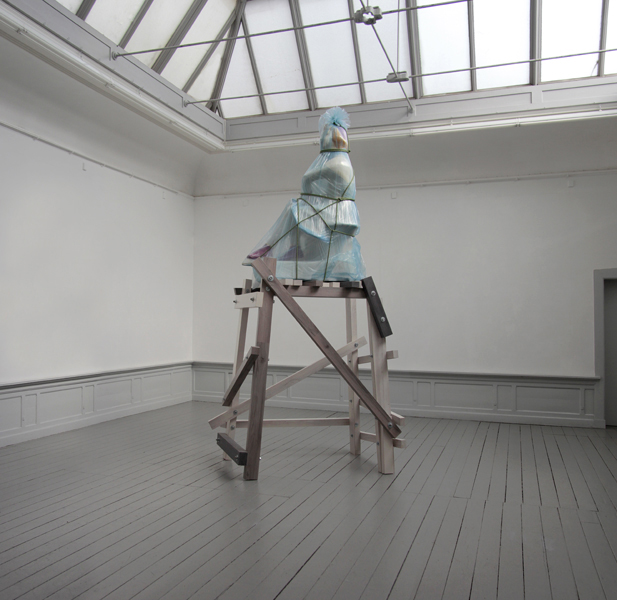Jeroen Bodewits
Heritage (Наследие)
Russian
Series
2013
wood, IKEA
laminate, metal, epoxy
ca. 95 x 180
x 400 cm
THE GREATS
JEROEN
"Theo, Danielle, Tobias, Esther,
Marjon, Hans, Tobias, Hanneke, Huig, Arjan, Maarten, Emiel, Judith, Frank and
Jeroen." I chant some names of people who arrived at the art academy St.
Joost together with me in 1991. In retrospect, I can say with certainty that
they influenced my work more than the artists who fill the museum galleries or artbooks.
After art school most of my sources of inspiration disappeared out of sight. Every
now and then I heard something of such or such, but after four years it became
apparent that my year group had barely produced professional artists. Most of
them have become successful people in other sections of society, not
necessarily in the arts. They are all people, often with families, who
unfortunately do not qualify to be included in this blog, because it should be
about the 'dead'. My year group yielded one dead artist. One of us was snatched
away from life brutally. The chills run down my spine when I think about the
car accident on the Antwerp ring road, two summers ago already.
Currently Jeroen has the entire hall of
the dead of the academic year 1991/95 for himself alone. Indeed a solo, but one
that came too early. Is that a comforting thought? With foresight, I declare
that he will receive all of us, his fellow students up there at some point. He
will do well. In life he wanted a reunion, at least that's what he told me when
we met at an opening by chance, a week before the fatal accident.
BODEWITS
A Russian soul creeps into his work already
at the art academy. I notice that his last name is of Russian origin. His
sculptures are becoming increasingly layered and cover more rooms. As a viewer you
seek, get lost and leave the labyrinth with something other than what you came
for. Innocent-looking details in his work turn out demonic on closer
inspection. Jeroen could speak very clear about the world covered with mystery.
He was, after all, at home. He knew the way to the tsarist court before he took
one step in Russia.
He managed to travel far without setting
off. This defied my imagination. Mind you, we were not even nineteen and didn't
travel the world. How did he manage to guide 'us' so excellent through the
unknown? He went to the real Russia later. A period where I lost sight of him
for a while.
Jeroen articulated, he was cautious and
wary too. Before he undertook something or started a new sculpture, he prepared
meticulously for the adventure. You can recognize this in his sculptures. They
lie there like relics that are preserved for eternity. The narrative character
of his images continues to inspire me. As to caution and preservation, as in
many other respects, however, we were very different from each other. Going on
a journey together failed, but our lives continued to intersect. "You are
so different from me. We are a kind of opposites that reinforce one another",
so we said to each other a week before the big solo came.
Now only his work is visible. It takes
me back to the beginning when we met and wanted to be artists. It brings me
back to the greats: Theo, Danielle, Tobias, Esther, Marjon, Hans, Tobias,
Hanneke, Hugh, Arjan, Martin, Emiel, Judith, Frank and Jeroen.
Bart
Lodewijks
Gent, March 24, 2016
Gent, March 24, 2016
Bart Lodewijks (NL/BE)
Diepenheim
2016
chalk lines
on homes in Diepenheim, part of project DRAWING FRONT
(photo R.
Korten)




